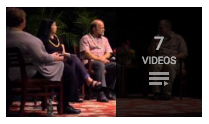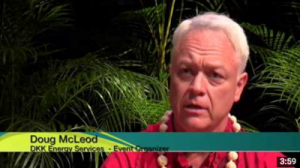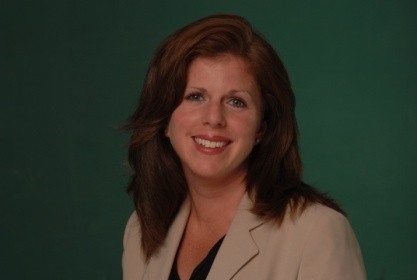
by HEC Team | Apr 7, 2015 | 2015, News
More than 30 percent of Maui’s energy needs, on average, are being met by renewable energy sources such as wind and rooftop photovoltaic (PV) systems, and the trend continues to rise, making Maui a national and global leader in the adoption of renewable energy. This was just one of the positive observations to emerge from the 2015 Maui Energy Conference + Exhibition that spanned two days at the Maui Arts & Culture Center last month. More than 300 energy industry leaders from Hawaii, the Mainland and Japan attended and shared ideas on how to better serve customers in today’s rapidly changing power generation and delivery environment.
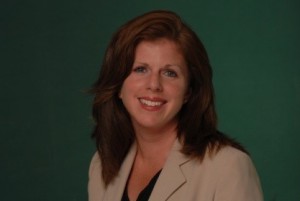
Holly Benz
At the conference, Program Committee member Holly Benz of Schneider Corporation said: “All eyes are on Hawaii.” Benz said outsiders are continuing to closely watch the state and its work on energy issues. “There is a tremendous opportunity for Hawaii to lead, to test and to learn.” Keynote speakers Alan Oshiro, President of Hawaiian Electric Company and Eric Gleason, President of NextEra Energy Hawaii shared perspectives on the acquisition of Maui Electric’s parent company, HEI by NextEra and outlined the benefits that it can bring to customers and Hawaii. NextEra, the largest generator of wind and solar energy in North America, has announced its commitment to lower Hawaii’s high electricity costs.
One of the nine thought-provoking panels, “Focus on the Customer—Maui Style,” discussed proposed changes in Maui’s energy landscape, concluding that these must be transparent to residents and engaging for young people. “In my business,” Cathy Nobriga Kim, vice president of Maui Soda and Ice Works said, “energy is crucial.” When asked how businesses could be involved in renewable energy solutions for Maui, Kim observed that business involvement in pilot projects to develop renewable energy solutions are beneficial. Other panelists said that government and community leaders must step up to explain the changing energy landscape. Information provided to residents must be true and trustworthy; “There needs to be transparency,” one panelist said. The conference was hosted by the Maui Economic Development Board and the Mayor’s Office of Economic Development.
“There is a tremendous opportunity for Hawaii to lead, to test and to learn.” Holly Benz, Maui Energy Conference + Exhibition Program Committee member

by HEC Team | Apr 6, 2015 | 2015, News
The 2015 Maui Energy Conference saw more than 300 energy industry leaders from Hawaii, the Mainland and Japan exchanging ideas on how to better serve customers in today’s rapidly changing power generation and delivery environment.
In welcoming remarks, Mayor Alan Arakawa set out his goal for Maui County, which now gets 30 to 35 percent of its power from renewable energy sources, is to have 100 percent of its power generated by renewable sources. “It’s not just to save money,” he told conference attendees. “It is about freedom, self-sufficiency and sustainability.” In just a year, the cost of a barrel of oil has dropped from over $100 to around $50, Arakawa said. “These wild price swings are proof that as long as we import oil we are subject to forces beyond our control.”
Many of the conference attendees focused in on keynote addresses from Alan Oshima, President and CEO of Hawaiian Electric Company, and Eric Gleason, President of NextEra Energy Hawaii. They discussed how the proposed $2.6 billion Hawaiian Electric Industries-NextEra merger could benefit Hawaii with more development of renewable power resources, lower customer bills and improved service reliability.
Gleason told conference attendees that the merger provides a “very exciting opportunity” for Hawaii to “get off the addiction to oil” by developing its “world-class renewable energy resources.” Because its size and experience in renewable power development, NextEra brings a lot to the table in a merger with HECO. NextEra “has a lot of buying power,” and it has a track record of delivering projects on time and on budget, he told conference attendees. Oshima explained that the merger “really makes sense for Hawaii” as the islands’ utilities strive to be leaders and early adopters of renewable energy technology and development of natural resources. By 2030, HECO aims to draw 65 percent of its energy on Oahu from renewable resources, triple distributed power and lower power bills by 20 percent. To do so, “we’ve reorganized how we look at things in the company,” Oshima said. No longer primarily driven by electrical engineers, HECO’s direction also is being guided by customer service and government relations advisers. “Change can be exciting. Change can be fun, and change is necessary,” he explained.
Oshima told the conference that HECO is looking at liquefied natural gas, also known as LNG, as a cleaner fuel and a more stable energy source. The cost of buying oil for power generation accounts for about 50 percent of a customer’s bill, while it had been as much as 70 percent in the past, according to HECO. HECO would like to see fuel be a more stable expense for utility customers, Oshima said. Hawaii’s effort to incorporate intermittent, renewable energy is a challenge that will be faced by utilities nationwide, eventually, Oshima predicted. “We are experiencing these issues earlier than anyone else,” he noted. HECO customers are demanding smart-grid services and grid modernization, and “we have to listen to our customers,” Oshima said, adding that HECO needs to go beyond implementing technology and, instead, be at the forefront of technology, being an early adapter.
Gleason told conference attendees that NextEra began a transformation from “highly dependent” oil power generation to renewable energy 30 years ago with its subsidiary, Florida Power & Light. The utility serves 4.7 million customers in Florida and supplies half of the state’s power. Since 2001, FP&L has reduced its annual oil consumption from 40 million barrels to around 200,000 barrels. The reduced dependence on oil for power generation has saved the utility $7.5 million annually, a savings passed on to consumers, according to Gleason. FP&L has the lowest power rates in Florida, he added. NextEra has shown that “you can drive down costs and improve reliability and make things cleaner, all at the same time,” he said.
Gleason pledged that NextEra is committed to learning how to do business well in Hawaii, including the establishment of a board of residents to advise NextEra on how to do business in the islands. He told conference attendees that NextEra would continue HECO’s tradition of charitable giving to support the community. Also, for at least two years, there would be no involuntary layoffs of HECO employees who will retain all current compensation and benefits, he said. NextEra has nearly 14,000 employees in 27 states and Canada, and it is the largest generator of wind and solar power in the North America.
On the second day of the conference, a summary of day one was delivered by Holly Benz, Vice President of the Schneider Corp. and a member of the conference’s program committee, and by Jonathan Koehn, also a program committee member who works as the Regional Sustainability Coordinator for the City of Boulder, Colo. “All eyes are on Hawaii,” Benz said, stressing how Hawaii is a “postcard from the future” because it is at the leading edge of learning how to make the transition from on-demand, oil-fired power generation to as-available renewable power sources. “There is a tremendous opportunity for Hawaii to lead, to test and to learn,” she said. Koehn saw a lot of diversity and passion in the conversations energy conference speakers and participants were having as the conference wrapped up. Benz applauded the strong positions leaders and policy makers were expressing, and she was impressed by the level of engagement they were taking given the magnitude of the challenges ahead.
A presentation led by Maui Economic Development Board President and CEO Jeanne Skog reported the results of “MPower Maui: An Energy Conversation.” The study involved 90-minute interviews with 435 people and confirmed much of what’s already been believed as far as local community sentiment about electricity and energy alternatives. High energy prices were a dominant concern, but MPower participants also wanted energy alternatives. Their goals have evolved from wanting safe, reliable and cheap energy to calling for safe, reliable, affordable and environmentally safe options. Participants also were outspoken about environmental health issues as well as ensuring equity and affordability.
The final day of the energy conference offered optional Maui sustainability tours to Kaheawa Wind Farm, hosted by SunEdison, and the Smart Grid Demonstration Project—JumpSMARTMaui, hosted by Hitachi Ltd.
Conference attendees had the opportunity to “join the conversation” by downloading the Maui Energy Conference “App” by Zerista Inc., Facebook or Twitter. The proceedings were videotaped by Akaku Community TV and will be available for later viewing at: www.mauienergyconference.com. The conference was hosted by the Maui Economic Development Board and the Mayor’s Office of Economic Development.
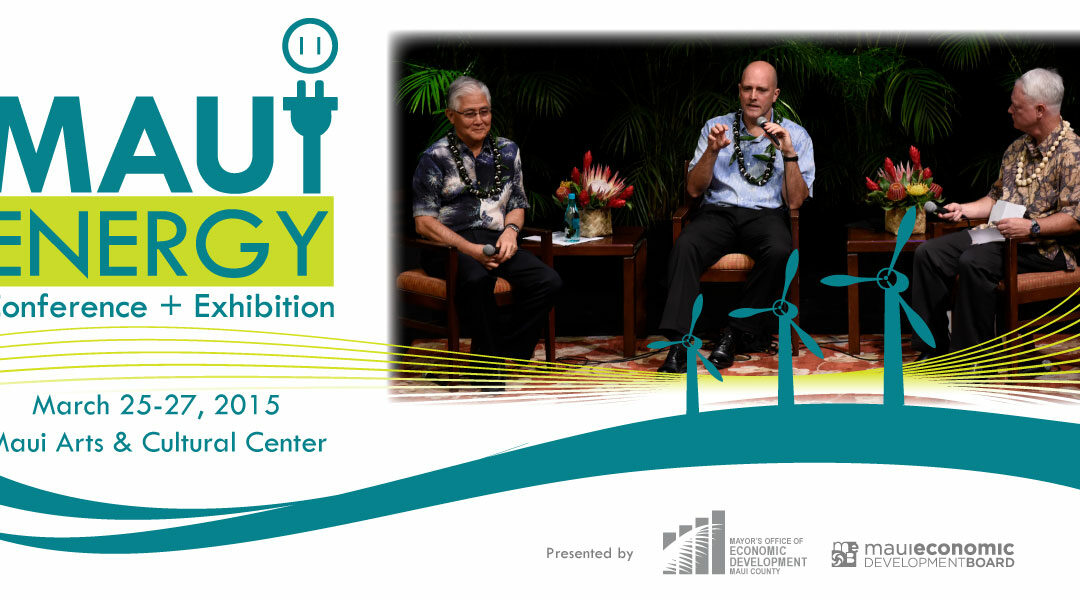
by HEC Team | Mar 28, 2015 | 2015, Past Conferences
A Focus on the Customer
Press Coverage of the 2015 Maui Energy Conference
PROGRAM
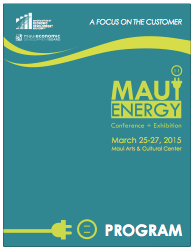
Download the Program Booklet
PROCEEDINGS
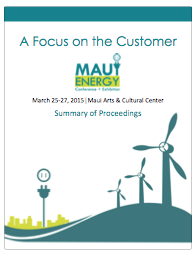
Download the Proceedings
PRESENTATIONS
Day 1 | Wednesday, March 25, 2015
NEXTERA AND HAWAIIAN ELECTRIC: TOGETHER, FOCUSED ON THE CUSTOMER
Introduction by Doug McLeod, Chair, Conference Program Committee
Alan Oshima, President & CEO, Hawaiian Electric Company
Eric Gleason, President, NextEra Energy Hawaii
SESSION 1: UNDERSTANDING THE EVOLVING ROLE OF THE CUSTOMER IN A BROADER CONTEXT
Jonathan Koehn, Regional Sustainability Coordinator, City of Boulder, Moderator
Henry Curtis, Executive Director, Life of the Land
John Farrell, Director, Democratic Energy, Institute for Local Self-Reliance
S. David Freeman, American Engineer, Attorney, and Author
SESSION 2: THE CUSTOMER OF THE 21ST CENTURY
Jay Griffin, Chief of Policy and Research, Hawaii Public Utilities Commission, Moderator
Neil “Dutch” Kuyper, Chief Executive Officer, Parker Ranch, Inc.
Hunter Lovins, President, Natural Capitalism Solutions
Justin McCurnin, Vice President & General Manager, Smart Grid Solutions, Honeywell
Jon Yoshimura, Director of Policy and Electricity Markets, SolarCity
SESSION 3: ARE WE SEEING WHAT THEY’RE SEEING: CUSTOMER PERCEPTIONS ON ENERGY
MPowerMaui: An Energy Conversation A Presentation of Results
Jeanne Unemori Skog, President & CEO, Maui Economic Development Board, Inc.
Fern Tiger, Principal and Creative Director, Fern Tiger Associates, Moderator
David Bissell, President & CEO, Kauai Island Utility Cooperative
Jeff Mikulina, Executive Director, Blue Planet Foundation
Will Rolston, Energy Coordinator, County of Hawaii
Jeanne Unemori Skog, President & CEO, Maui Economic Development Board, Inc.
SESSION 4: ADVANCING TOWARD GRID MODERNIZATION MEETING CUSTOMER NEEDS
Maurice Kaya, Program Director, Energy Excelerator, Pacific International Center for High Technology Research, Moderator
Jim Alberts, Senior Vice President, Customer Service, Hawaiian Electric Company
John Cooper, U.S. Business Development Manager, Business Transformation & Engineering Solutions, Siemens Industry, Inc.
Tad Glauthier, Vice President, Hawaii Operations, STEM Inc.
Joseph Boivin, Senior Vice President, Business Development & Corporate Affairs, Hawaii Gas
SESSION 5: THE GROWTH OF DISTRIBUTION GENERATION – GOOD OR BAD FOR THE CUSTOMER?
Sebastian “Bash” Nola, Utility Consultant, Moderator
Mark Duda, President, Hawaii PV Coalition, and Founder, RevoluSun LLC
Dan Girard, Director, Renewable Energy and Energy Storage Business Development, S&C Electric Company
Mathew McNeff, Manager, Engineering, Maui Electric Company
Richard Rocheleau, Director, Hawaii Natural Energy Institute, University of Hawaii
Day 2 | Thursday, March 26, 2015
FOCUS ON THE CUSTOMER – MAUI STYLE
Frank De Rego Jr., Business Development Projects Director, Maui Economic Development Board, Inc., Moderator
Irene Bowie, Director, Maui Tomorrow
Carl Freedman, Owner and Principal, Haiku Design and Analysis
Kelly King, Vice President & Chief Communications Officer, Pacific Biodiesel, Inc.
Cathy Nobriga Kim, Vice President, Maui Soda and Ice Works
CLIMATE AFFORDABILITY: GETTING TO GREEN AND KEEPING THE LIGHTS ON
Mark Toney, Executive Director, The Utility Reform Network Slapping
HOW STATE ENERGY POLICY WILL HELP THE CUSTOMER
Luis Salaveria, Director, Department of Business, Economic Development & Tourism, State of Hawaii
SESSION 6: HOW CAN THE CUSTOMER BECOME AN ACTIVE PARTICIPANT IN THE ENERGY LANDSCAPE
Holly Benz, Vice President, Consulting, Schneider Electric, Moderator
Deborah Kimberly, Vice President, Customer Energy Solutions, Austin Energy
Matt O’Keefe, Director, Market Development and Regulatory Affairs, Opower
Ray Starling, Program Director, Hawaii Energy Conservation and Efficiency Program
Kimberly Williams, Co-Founder and Managing Director, Solar Fuels Institute
SESSION 7: THE CHANGING REGULATORY COMPACT – THE CUSTOMER, THE UTILITY, THE REGULATOR
Joe Viola, Vice President, Regulatory Affairs, Hawaiian Electric Company, Moderator
Lorraine Akiba, Commissioner, Hawaii Public Utilities Commission
Jim Alberts, Senior VP Customer Service, Hawaiian Electric Company
Kyle Datta, General Partner, Ulupono Initiative
Raya Salter, Senior Utility Advocate, Natural Resources Defense Council
SOCIAL INNOVATION: OUR VISION FOR THE CUSTOMER
Yasuo Tanabe, Vice President & Executive Officer, Government and External Relations, Hitachi, Ltd.
SESSION 8: CONSUMER PROTECTION: WHO’S LOOKING OUT FOR THE CUSTOMER?
Thomas Gorak, Chief Counsel, Public Utilities Commission, State of Hawaii, Moderator
John Howat, Senior Policy Analyst, National Consumer Law Center
Michael Jung, Policy Director, Silver Spring Network
Jeffrey Ono, Executive Director, Division of Consumer Advocacy, Department of Commerce and Consumers Affairs, State of Hawaii
Mark Toney, Executive Director, The Utility Reform Network
ENGAGING CUSTOMERS IN A FRESH, NEW WAY
Deborah Kimberly, Vice President, Customer Energy Solutions, Austin Energy
KEY TAKEAWAYS: WHERE DO WE GO FROM HERE?
Constance Lau, Chairman & Chief Executive Officer, Hawaiian Electric Industries, Inc.
REDEFINING THE CUSTOMER’S ROLE IN THE UTILITY OF THE FUTURE
Lorraine Akiba, Commissioner, Hawaii Public Utilities Commission, Moderator
Neil “Dutch” Kuyper, Chief Executive Officer, Parker Ranch
H. Ray Starling, Program Director, Hawaii Energy
Bob Lachenmayer, Smart Cities Manager, Schneider Electric
Ben Springer, Senior Associate, Energy Futures Coalition
HOW WILL THE ELECTRIC SYSTEM CHANGE IN THE FUTURE?
Bob Lachenmayer, Smart Cities Manager, Schneider Electric, Moderator
Ron Binz, Former Chair, Colorado Public Utilities Commission
L. Hunter Lovins, President, Natural Capitalism Solutions
Richard Rosenblum, Chief Executive Officer, Hawaiian Electric
Ben York, Sr. Project Engineer, Electric Power Research Institute
Kyle Datta, General Partner, Ulupono Initiative
HAWAII’S UNIQUE PLACE IN THE EMERGING ENERGY TRANSFORMATION
Constance Lau, President and Chief Executive Officer, Hawaiian Electric Industries Inc.
CLOSING REMARKS
Hermina Morita, Chair, Hawaii Public Utilities Commission
VIDEOS
View the conference videos on the Maui Energy Conference YouTube channel, or click on the thumbnails below.
Wednesday, March 25

Thursday, March 26
